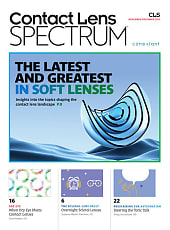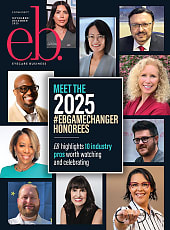AMERICAN DEMOGRAPHICS 2015
American DEMOGRAPHICS 2015


Welcome to the seventh annual Eyecare Business report, a close-up look at the state of retail in the United States focusing on opticals and beyond. This year the overall theme is cautious optimism—things are looking up, somewhat, say the respondents to our national survey as well as retail industry experts and economists.
RETAIL REALITIES
Like in the optical world, within the retail universe overall there is also a better picture being painted. Jack Kleinhenz, chief economist at the National Retail Federation (NRF) notes, “Until recently we have either received mixed or disappointing economic data. However, there is good reason to believe that the economy will pick up speed over the remainder of this year.”
What’s bringing the upswing along? Kleinhenz notes the following.




RETAIL REAL ESTATE
With alternative shopping locations challenging mall retail, commercial real estate vacancy rates are still on their way down, notes Ryan Severino, CFA, senior economist, Reis, Inc.




OPTICAL OUTLOOK
Within the optical industry, the respondents to EB’s survey—including O.D.s in solo and group practices as well as dispensing opticians and other eyecare professionals—2014-2015 has been better year over year compared to 2013-2014, with the majority of respondents experiencing overall increases.

A Closer LOOK at Sun Sales

57% of respondents report that 50% or more of their sun sales are Rx sunglasses

55% report that less than 10% of their overall sun sales are Rx sport sunglasses

50% report that less than 10% of their overall sun sales are plano sunglasses

VIDEO ON DEMAND
Learn the five key demographic changes predicted throughout the world by the year 2030 in this video by Euromonitor International.
HERE’S HOW TO ACCESS IT:



Polycarbonate continues its dominance across the states as the most-used lens material. AR is the number one most-sold “extra,” reported by 82% of ECPs to be the first and foremost extra. AR is followed by photochromics, polarization, and tints (in that order, though all three are distant followers).

When it’s time for a new Rx, the eyewear is likely to be new, too, our respondents say, particularly in the Midwest, where a whopping 97% of respondents opt for the latest style rather than a refill. Overall, the refill vs. new rate remains the same as last year—89% new vs. 11% refill.
On the Edge
THE TOP REASONS FOR EDGING IN-HOUSE?
To save money on labs bills and for quicker turnaround/better customer service

In terms of second pairs—watch out sunglasses! We may very well be seeing the rise of computer eyewear. While sunwear still leads the category by a very healthy margin, 72%, that figure is flat from 2014, while computer eyewear is up another point to 19% with a powerful leap to 28% in the Northeast. Clips cling to their 2% pair share, while casual eyewear dips from 9% to 7%.

The Northeast is reporting the most in-house labs (59%) followed closely by the South (58%). The future outlook looks good, too, as 12% of respondents indicate a desire to begin edging within the next three years (3% say in one year).
ECPs who do their own finishing are experiencing a slight uptick in business, too. Though the largest percentage (27%) ECPs who have edging equipment report doing the same amount of work as last year, there is a slight uptick in the number of ECPs who say they are doing more edging than last year (19% vs 17% last year).
As for surfacing, currently 13% of respondents nationwide say they have a surfacing or casting system in-house, with 6% declaring a plan to begin within three years.

It hasn’t been too bad a year for the kids’ category, either—it is also up this year, to 33% with the Midwest and West at the head of the class at 35%. Low vision had a blip of a rally, rising one percentage point this year to 4%, while sports has more than doubled its score this year, jumping from 11% to 27%. The winner in the sports category, regionally, is the South with 32% of specialty sales.



